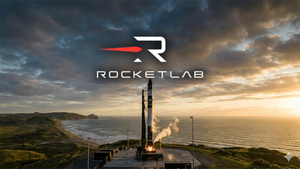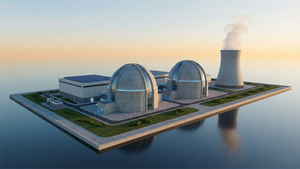
Silver has embarked on an explosive rally, rocketting by an astounding 43-45% year-to-date and decisively topping the $42 an ounce mark, reaching levels not seen in 14 years. This remarkable ascent has not only dwarfed gold's performance but also signaled a profound shift in the precious metal's market dynamics. Far from being merely a safe-haven asset, silver's surge is primarily fueled by insatiable industrial demand, particularly from the booming solar energy and electric vehicle (EV) sectors, coupled with persistently flat mine supply and rapidly dwindling inventories. The immediate implications are significant, pointing towards sustained price volatility and potential for further upside as the global economy accelerates its transition to green technologies.
The current trajectory suggests that silver is no longer just "poor man's gold" but a critical industrial commodity, indispensable to the technologies defining the 21st century. This fundamental revaluation has captivated investors and analysts alike, prompting a re-examination of its role in portfolios and its long-term price potential, especially as structural deficits appear to be deepening with each passing quarter.
The Green Revolution's Silver Lining: Unpacking the Historic Rally
Silver's dramatic price appreciation is a story of fundamental supply-demand imbalances exacerbated by the global push towards decarbonization. The metal's unparalleled electrical and thermal conductivity makes it an irreplaceable component in a host of high-tech and green energy applications, driving demand to unprecedented levels.
A primary catalyst is the burgeoning solar (photovoltaic - PV) industry. Silver is crucial for capturing electrons from sunlight, and the sheer scale of global solar panel deployment means this sector alone is projected to account for 19% of global silver demand in 2024, consuming an estimated 232 million ounces. Forecasts indicate this demand could surge by an astonishing 169% by 2030, underpinning a persistent need for the metal. Similarly, the electric vehicle (EV) revolution is a significant demand driver. Each EV typically incorporates 25-50 grams of silver in critical electrical contacts, battery management systems, and thermal components—roughly double the amount found in a conventional internal combustion engine vehicle. This escalating automotive demand is projected to triple by 2040. Beyond these titans, demand from electronics, electrical applications, and AI-related consumer devices further contributes to the record-high industrial consumption, which is expected to surpass 700 million ounces for the first time in 2024.
Compounding this demand explosion is a largely unresponsive supply side. Global silver mine production has remained stubbornly flat, increasing by a mere 0.9% to 819.7 million ounces in 2024, with only a 1% increase projected for 2025. Approximately 70% of silver production comes as a byproduct of mining other metals like copper, lead, and zinc. This co-production model makes silver supply inherently inelastic; miners don't significantly increase silver output in response to higher silver prices alone, as their primary focus remains on the main metal. Declining ore grades and rising production costs further impede any substantial supply expansion.
The cumulative effect of surging demand and stagnant supply has been a dramatic depletion of global silver inventories. Registered silver inventories at COMEX have plummeted from over 400 million ounces in early 2021 to around 291 million ounces by mid-2024, a staggering decline of over 70% from their 2020 peak. The London Bullion Market Association (LBMA) has reported a similar trend, with available stocks in London vaults falling 40% between 2022 and 2023, representing a drop of over 300 million ounces from its 2021 peak. The silver market has been in a physical supply deficit for four consecutive years, with projections indicating that this structural deficit—142 million ounces in 2023—could nearly double to 265 million ounces by the end of 2024, painting a clear picture of an acute and worsening imbalance.
Miners Strike Gold (and Silver) as Industrial Users Face Headwinds
The unprecedented surge in silver prices has created a clear divide between beneficiaries and those facing increased cost pressures across various industries. At the forefront of the "winners" circle are the silver mining and streaming companies, whose profitability directly correlates with the rising value of the metal they extract or trade. Conversely, sectors heavily reliant on silver as a critical raw material, particularly in the rapidly expanding green energy and automotive industries, are now grappling with significantly higher input costs.
Silver mining companies are experiencing a robust boost to their financial performance. As the price of silver climbs, their revenues swell, profit margins expand, and cash flows strengthen. Many of these companies operate with relatively fixed production costs, meaning that each additional dollar in silver price translates almost directly into improved profitability. Leading pure-play silver miners like First Majestic Silver (NYSE: AG), which derives a significant portion of its revenue from the metal, are direct beneficiaries. Similarly, major primary silver producers such as Pan American Silver (NASDAQ: PAAS) and the largest U.S. and Canadian primary silver producer, Hecla Mining Company (NYSE: HL), are seeing substantial gains. Streaming companies like Wheaton Precious Metals (NYSE: WPM), which acquire silver at pre-set prices and sell at market rates, are also capitalizing on the widening margins. Other notable beneficiaries include MAG Silver (TSX: MAG), Endeavour Silver (TSX: EDR), Fortuna Silver Mines Inc. (NYSE: FSM), Silvercorp Metals Inc. (TSX: SVM), Coeur Mining, Inc. (NYSE: CDE), Avino Silver & Gold Mines (NYSE: ASM), Vizsla Silver (TSX: VZLA), and Buenaventura Mining Company Inc. (NYSE: BVN), all of whom have significant exposure to silver production.
On the other side of the ledger are industries and companies that use silver as an indispensable component in their products. The solar panel manufacturing sector, for instance, relies heavily on silver paste for photovoltaic cells. Major players like JinkoSolar Holding Co., Ltd. (NYSE: JKS) and LONGi Green Energy Technology Co., Ltd. (SHA: 601012) are facing increased production costs, which can erode profit margins if not effectively managed through hedging strategies or price adjustments. Similarly, the electric vehicle industry, a prodigious consumer of silver in battery management systems, power electronics, and sensors, is feeling the pinch. EV manufacturers such as Lucid Group Inc (NASDAQ: LCID) and Rivian (NASDAQ: RIVN) could see their input costs rise significantly. Without robust hedging mechanisms or the ability to pass on increased costs to consumers, these companies may experience pressure on their bottom lines, potentially impacting their competitive positioning in a fiercely contested market. The challenge for these industrial users is that silver's unique conductive properties make it difficult to substitute without compromising performance, forcing them to absorb higher prices.
Green Revolution's Demand Ignites Broader Commodity Trends
Silver's dramatic rally in 2025 is more than a standalone market event; it is a powerful indicator of profound shifts within the global commodity landscape, particularly driven by the accelerating green energy transition. The metal's surge underscores its indispensable role in decarbonization efforts, creating significant ripple effects across various industries and drawing attention to potential policy interventions and historical parallels.
At its core, silver's rally is inextricably linked to the burgeoning green economy. The solar photovoltaic (PV) industry stands as the largest and fastest-growing category for silver consumption. Silver's unmatched electrical conductivity, thermal efficiency, and optical reflectivity make it vital for manufacturing PV cells. With the average solar panel containing around 20 grams of silver, and demand from this sector projected to grow substantially, especially with high-efficiency cells like TOPCon and Heterojunction requiring even more silver, the green revolution is effectively underwriting silver's future. Similarly, the electric vehicle (EV) sector is a significant driver; EVs utilize 25-50 grams of silver, significantly more than traditional internal combustion engine (ICE) vehicles. This demand is integrated into electrical contacts, battery management systems, power electronics, and autonomous driving sensors. As global EV sales are projected to exceed 30 million units by 2030, silver's consumption in this area will only accelerate. Beyond these major applications, silver is also finding increased use in other nascent green technologies, such as catalysts for green hydrogen production, further solidifying its critical status.
The ripple effects of this price surge are being felt throughout global supply chains. While silver miners cheer increased profits, companies like major solar panel manufacturers JinkoSolar Holding Co., Ltd. (NYSE: JKS) and LONGi Green Energy Technology Co., Ltd. (SHA: 601012), along with EV producers such as Lucid Group Inc (NASDAQ: LCID) and Rivian (NASDAQ: RIVN), face mounting pressure from higher input costs. Silver can constitute 6-12% of the total cost of a solar panel, directly impacting their production expenses and profit margins. These industries are intensely focused on "thrifting" – reducing silver content – and exploring alternative materials or advanced cell architectures that require less silver, though full substitution often comes with performance trade-offs. The long lead times (5-10 years) for new mine production mean that these industries cannot simply wait for supply to catch up; innovation and recycling efforts are becoming paramount.
Regulatory and policy implications are also coming to the forefront. The U.S. has already designated silver as a "critical mineral" for national security, a classification that could pave the way for policies aimed at securing domestic supply, such as government stockpiling, expedited permitting for local mining projects, and increased investment in domestic production. Such designations can also influence trade policies, potentially leading to tariffs on imported silver or tighter export controls, as seen with other critical minerals. Furthermore, government subsidies and aggressive targets for renewable energy deployment and EV adoption worldwide continue to bolster silver demand, implicitly linking its value to national strategic goals. This highlights a delicate balance: while governments push for green technologies, they must also address the critical mineral supply chains that underpin them. Efforts to improve recycling rates for silver, especially from end-of-life solar panels, are gaining traction as a long-term strategy to mitigate supply constraints.
Historically, silver's price movements have often been influenced by a mix of speculative interest, economic conditions, and its industrial utility. The current rally, while exhibiting some speculative elements, differentiates itself from the 2011 spike, which saw prices briefly near $50 per ounce, largely driven by inflation fears and a post-2008 speculative surge. Today's rally appears to have more fundamental underpinnings rooted in tangible industrial demand. Comparing it to the infamous Hunt brothers' attempt to corner the market in 1980, which also pushed prices over $50 per ounce, further highlights the distinction; the current environment is driven by genuine market forces rather than manipulation. These historical precedents serve as a reminder of silver's inherent volatility but also underscore its enduring significance during periods of economic transition and technological advancement.
What Comes Next: A Sustained Ascent or Volatile Correction?
The road ahead for silver is poised to be both exciting and potentially turbulent. Given the structural nature of the current supply-demand imbalance, several short-term and long-term possibilities emerge for the silver market. In the immediate future, continued price volatility is almost a certainty, with strong upward pressure as industrial demand, particularly from the green energy sector, shows no signs of abating. Analysts widely expect prices to average between $31-$34 per ounce in 2025, with potential spikes well above $38. However, silver's historical tendency for sharp corrections means temporary pullbacks are always a possibility, which could offer strategic entry points for astute investors.
Longer term, the narrative for silver is exceptionally bullish. Some experts even suggest that triple-digit silver prices ($100 or even $130 per ounce) might be necessary to incentivize the substantial capital investment required for new mining projects to address the widening deficit. This would necessitate significant strategic pivots from mining companies towards aggressive exploration and development of primary silver deposits, which are currently less common. Market opportunities will abound for companies deeply entrenched in the silver supply chain, from mining to advanced recycling technologies, as efforts to secure this critical metal intensify.
Challenges include the potential for industrial users to seek out alternatives if prices become prohibitively high, although silver's unique properties make it difficult to substitute in many high-performance applications without performance penalties. Policy implications related to green energy mandates will continue to be a significant tailwind, as governments worldwide push for more solar and EVs. Investors should meticulously watch for continued inventory draws from major exchanges like COMEX and LBMA, shifts in central bank monetary policy (particularly interest rate cuts, which reduce the opportunity cost of holding non-yielding assets), and escalating geopolitical developments that could further bolster safe-haven demand. The unfolding narrative of silver is one of a metal indispensable to the future, whose true value is only now being fully recognized.
Conclusion: Silver's Enduring Shine in a Green Future
The current rally in silver is far more than a fleeting market anomaly; it represents a fundamental revaluation driven by its indispensable role in the global green energy transition. The confluence of record industrial demand, particularly from solar and electric vehicles, coupled with persistently flat mine supply and rapidly dwindling inventories, has created a structural deficit that is unlikely to resolve quickly. This acute imbalance has catapulted silver into the spotlight, demonstrating its critical importance beyond its traditional role as a monetary metal and cementing its status as a vital industrial commodity for the 21st century.
Moving forward, silver is poised to remain a central figure in the commodity markets. Its dual nature as both a precious metal and a crucial industrial input provides it with unique resilience and substantial upside potential. The persistent physical deficits and the unwavering demand from burgeoning green technologies suggest that the current price levels may not be a peak but rather a new, higher baseline. Investors should diligently monitor key indicators such as global manufacturing data, EV sales figures, solar capacity additions, and, crucially, the levels of exchange-held inventories. Any significant policy changes related to green technology adoption or new, large-scale discoveries in mining could also impact its trajectory, though the latter often has a long lead time to market impact.
Ultimately, silver's enduring shine reflects its integral role in building a sustainable future. For both industrial players navigating supply chain pressures and investors seeking exposure to the green economy, understanding and adapting to this new paradigm for silver will be crucial in the coming months and years. Its journey above $42 an ounce is likely just a significant chapter in a longer, more profound story of a metal whose time has truly come, promising continued market attention and potential for substantial long-term gains.




